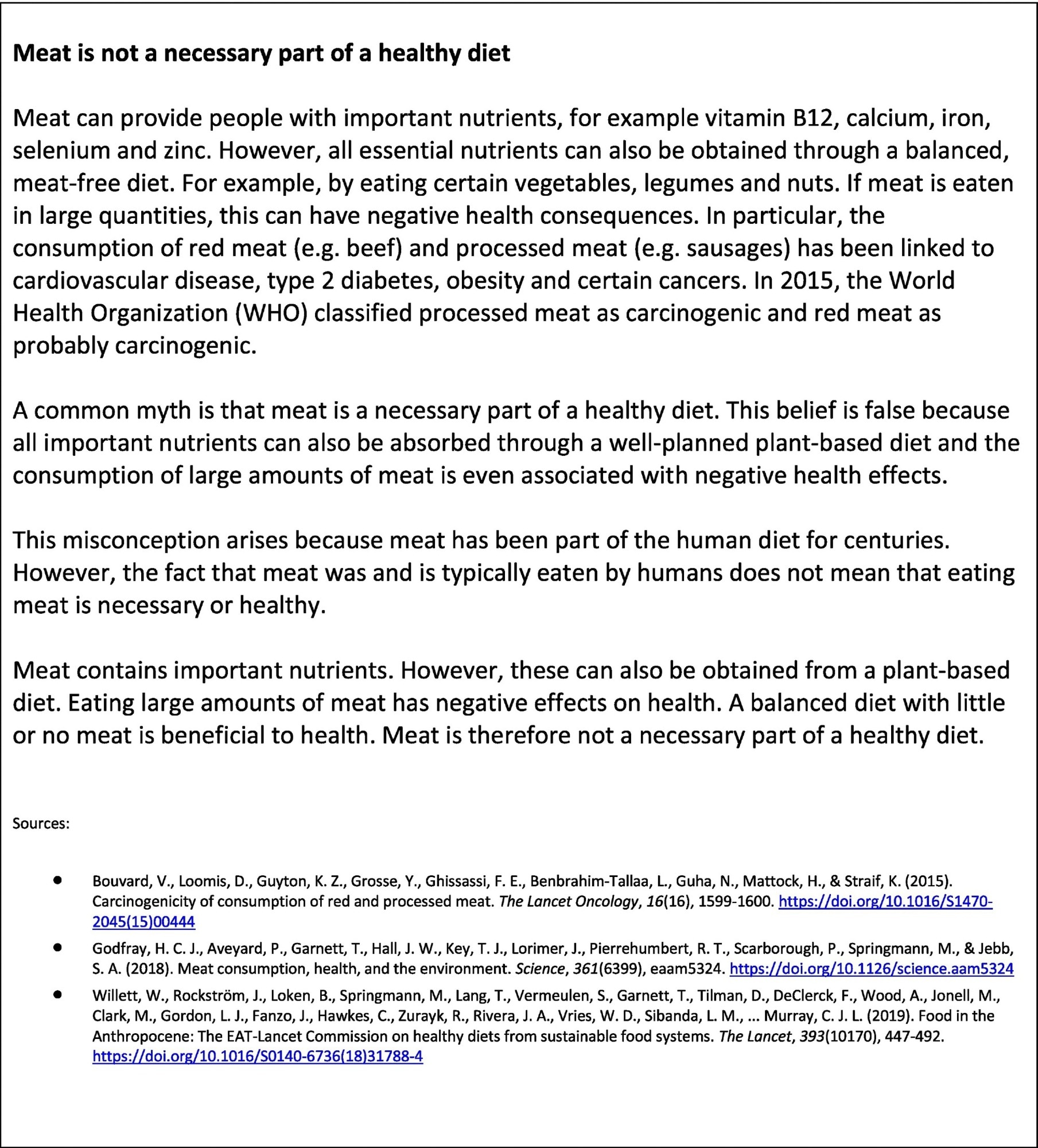A new study reveals that while the “truth sandwich” can quickly debunk stubborn myths about meat, its effectiveness wanes without repeated reinforcement, underscoring the challenge of achieving lasting dietary change.

Study: Debunking meat myths using the truth sandwich: A longitudinal experiment among German meat consumers. Image Credit: Maksim Denisenko / Shutterstock
In a recent study published in the journal Food Quality and Preference, researchers tested a specific and relatively novel myth-busting technique called the "truth sandwich" on a quota-based representative sample of 537 German meat consumers. Study findings revealed that the truth sandwich method significantly reduced participants' agreement with common meat myths immediately after exposure, without causing unintended reinforcement (backfire effects, which recent research suggests are rare).
However, when the experiment was repeated following a two-week gap in the supply of debunked information, the previously observed corrective effect had faded and become statistically non-significant, suggesting that while the truth sandwich is a potent short-term myth-busting tool, lasting change requires more sustained strategies.
Background
Decades of in-depth scientific research have established a clear and robust association between the high consumption of red (and especially processed) meats and the increased risk of several chronic diseases, including metabolic conditions, cardiovascular diseases (CVDs), and cancers.
Livestock farming has also been identified as a major driver of greenhouse gas emissions and biodiversity loss, establishing the meat-production industry as unsustainable compared to plant-based alternatives. In response, public health bodies, such as the German Nutrition Society (DGE), now recommend limiting adult meat intake to approximately 300 g per week.
Unfortunately, public behavior has been slow to change, with several global reports suggesting migration from meat-based foods to sustainable and healthier alternatives is substantially slower than previously projected. This discrepancy has been partly attributed to persistent misinformation, often disseminated on social media.
Common myths, such as "meat is a necessary part of a healthy diet," remain widespread and are hypothesized to act as significant barriers to dietary change. Correcting these beliefs has historically proven notoriously difficult. Simply repeating a myth to debunk it can sometimes inadvertently reinforce it, a phenomenon known as the “backfire effect.”
About the study
The present study aims to address this communication breakdown by conducting the first long-term effectiveness study to assess the effectiveness of the recently proposed “truth sandwich” debunking technique, a three-part structure that starts with a fact, addresses and refutes the myth, and concludes by reinforcing the initial fact.

Truth sandwich text debunking the health-related meat myth. Translated from German (original material) into English.
The study was conducted in two parts: 1. A preliminary study (n = 1,005; 496 women) to identify widely prevalent meat-associated myths, and 2. The main longitudinal experiment (n = 537; 263 women). The latter cohort was randomly subdivided into one of three groups. Two groups read a "truth sandwich" text specifically designed to debunk either the health myth or the environmental myth. The third group read a neutral control text about healthy eating.
Study methodology involved measuring the participants' agreement with the two most prevalent myths (identified from the first part of the study) on a 7-point scale across two time points: 1. ‘T1’ Immediately following an intervention explicitly designed to scientifically debunk the two most prevalent meat-associated myths (“Meat is a necessary part of a healthy diet” and “Meat is equally harmful to the environment as plant-based foods (e.g. tofu)”; and 2. ‘T2’ two weeks later, but without reexposure to corrected information.
Study findings
Descriptive statistics, bivariate Pearson's correlations, and four independent (time-point-specific) analyses of variance (ANOVAs) revealed that while the truth sandwich approach initially proved highly effective at correcting participants’ perceptions of meat-based myths without causing the backfire effect, this effect did not persist for two weeks.
At T1, participants who read the text debunking the health myth showed a significant drop in their agreement with it compared to the control group (mean agreement score of 3.49 vs. 4.62, p < .001; a medium-to-large effect size). Similarly, the environmental truth sandwich successfully reduced agreement with the environmental myth (mean score of 3.17 vs. 3.62, p = .033; a small to medium effect size).
However, by time T2 (two weeks later), the differences between the case and control groups had disappeared entirely. The belief in the myths among the intervention groups had "regressed," returning to levels statistically indistinguishable from the control group.
Furthermore, an evaluation of participants’ "trust in science" revealed that while people with higher trust in science scores were less likely to believe the myths at the study's initiation, this level of trust had no impact on the effectiveness of the truth sandwich approach. The technique worked just as well for science skeptics as it did for believers, but the effect faded for everyone.
Interestingly, participants rated the neutral control text (general dietary guidance from the German Nutrition Society) as more trustworthy and persuasive than the truth sandwich texts, likely because it contained familiar, common-sense recommendations.
Conclusions
The present study validates the truth sandwich approach as a potent, albeit incomplete format for correcting specific myths about meat consumption. While the technique can immediately correct individuals’ perspectives about a scientific fallacy without triggering the backfire effect, a one-off correction is insufficient to create lasting change.
Health organizations, dietitians, and science communicators may be able to leverage the truth sandwich approach for public messaging, but should ensure that information is delivered through trusted channels and repeated at key decision points (e.g., before food choices) to achieve longer-term impact.
Data availability
Data and analysis codes of the prestudy and the main study are available on the Open Science Framework (OSF):
https://osf.io/7ts3n/